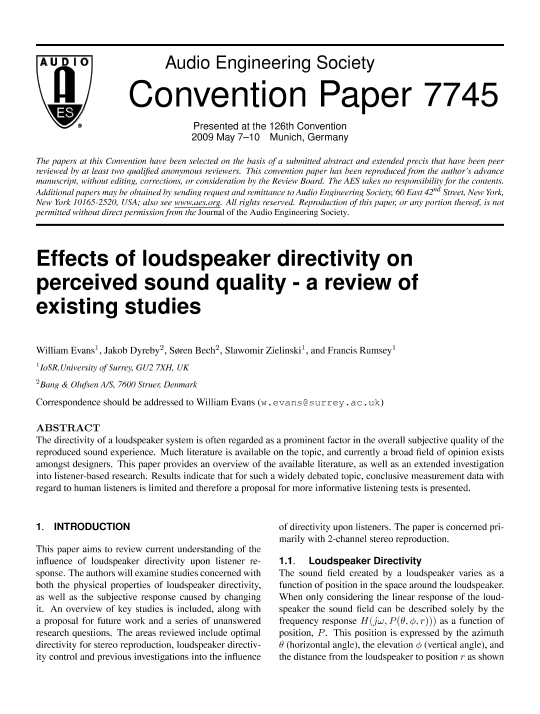I understand that loudspeaker colorations are easier to hear in mono. But does spatial quality preference in mono reliably predict spatial quality preference in stereo?
According to a paper written by Wolfgang Klippel and cited by Floyd Toole in his book (third edition, pages 185-186), the “feeling of space” makes a 50% contribution to "naturalness” (realism and accuracy), and a 70%(!) contribution to "pleasantness" (general satisfaction or preference). Here is how Toole sums it up (page 186):
"Sensations of sound quality and spaciousness contribute equally to impressions of "naturalness", and spatial quality dominated the impression of "pleasantness". Therefore whether one is a picky purist or a relaxed recreational listener, the impression of space is a significant factor."
The point of the preceding two paragraphs being, spatial quality matters a lot.
In the study posted by
@tuga in
post number 53, going from mono to stereo there is more movement in the spatial quality scores than in the sound quality scores, with which speakers rank first and second trading places. Now admittedly this is a very small sample size, but one of the conclusions one might draw from it (in the absence of additional data, which is the situation for most of us) is that preference in mono is a less reliable predictor of spatial preference than it is of sound quality preference.
What are your thoughts on the reliability of spatial quality preference in mono as a predictor of spatial quality preference in stereo?

